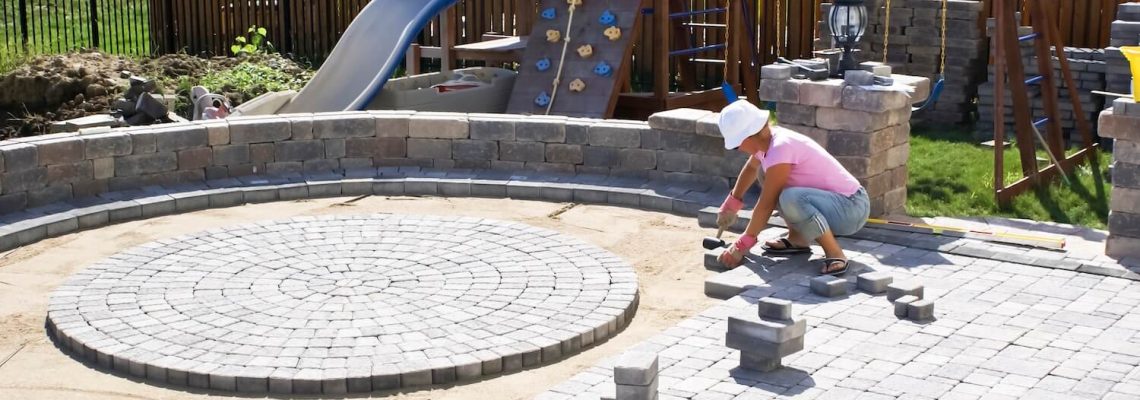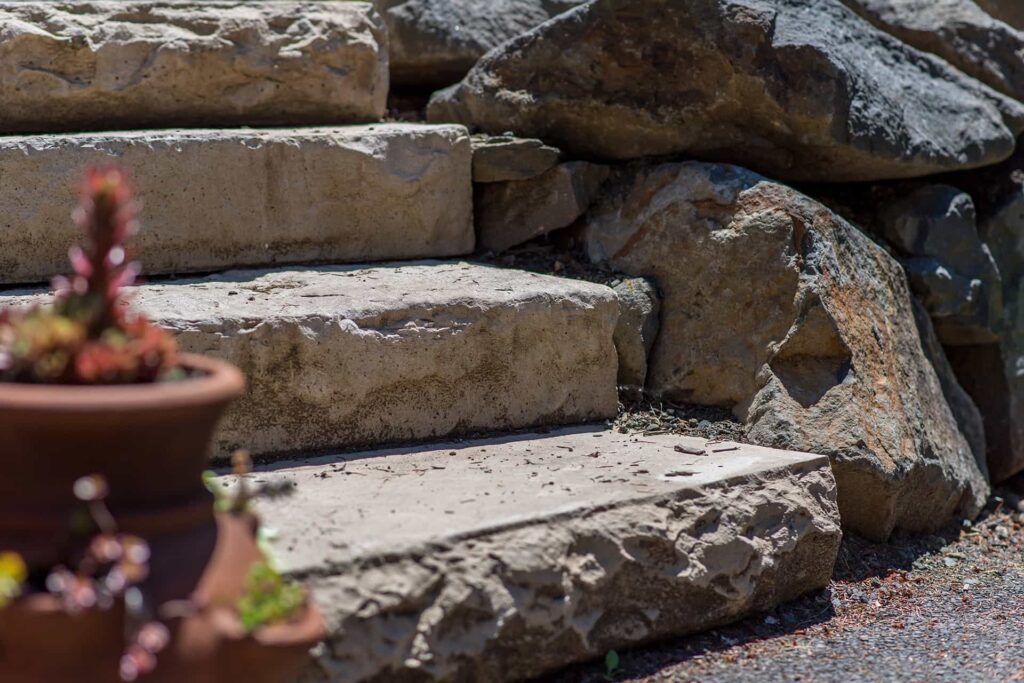Creating a unified aesthetic across different areas of your property not only enhances curb appeal but also elevates the overall outdoor experience. When designing your home’s exterior, it’s easy to focus on individual components—your driveway, patio, garden, or walkways—but these spaces can be far more beautiful and functional when designed as part of a cohesive whole. Using pavers to connect your driveway to your patio creates a seamless flow that enhances both the appearance and functionality of your outdoor spaces.
In this article, we’ll explore how to create a unified look between your driveway and patio using paver designs. We’ll delve into the practical and aesthetic benefits of pavers, how to choose complementary designs, materials, and patterns, and the importance of professional installation to ensure lasting beauty and durability.
Understanding Paver Designs
Pavers are a versatile, durable material that can be used to create beautiful, functional outdoor spaces. Whether you’re laying a new driveway or creating a stylish patio, pavers offer an ideal solution. They come in a variety of materials, including concrete, natural stone, brick, and recycled options, allowing you to select the perfect combination of aesthetics and practicality for your space.
Pavers are made in a wide array of shapes, sizes, colors, and textures. They allow for creative expression and the flexibility to suit virtually any design style, from classic to contemporary, rustic to modern. The benefits of using pavers go beyond their beauty. Pavers are durable, low-maintenance, and long-lasting, making them an excellent choice for areas exposed to heavy traffic, like driveways and patios.
Some advantages of pavers include:
- Durability: Pavers can withstand significant weight and are less likely to crack under pressure compared to poured concrete. This is particularly important for driveways where heavy vehicles will pass.
- Aesthetic Flexibility: Pavers come in countless designs, colors, and materials that can complement any landscape, architecture, or color scheme.
- Easy Repairs: If one or more pavers become damaged, they can be easily replaced without disturbing the rest of the design.
Harmonizing the Transition from Driveway to Patio
When designing a driveway and patio, the goal is to make the transition between the two areas feel seamless. After all, these spaces should flow together naturally, as they form part of the same outdoor living area. The way you design this transition can make a significant impact on the overall aesthetics of your home’s exterior.
One of the most effective ways to create a harmonious design is by choosing complementary colors and materials for both spaces. For example, using the same type of paver for both the driveway and the patio creates visual consistency. If you choose different materials, select those that work well together in terms of texture, color, and style.
Color Matching Design
One of the most important factors when harmonizing your driveway and patio is choosing colors that work well together. You can opt for matching colors in both areas or choose complementary shades that subtly transition from one space to the other. A common approach is using neutral tones—like grays, beige, or browns—that can blend seamlessly from the driveway to the patio. For instance, a lighter shade of gray on the driveway could gradually blend into a darker or warmer tone in the patio area.
Texture and Shape Matching Pavers
Pavers come in a wide variety of textures, and you should be mindful of how texture affects both the look and functionality of your driveway and patio. A rougher texture is ideal for paver driveways, where traction and durability are important. Conversely, patios often benefit from a smoother texture, creating a comfortable walking surface. However, you can still use pavers with varied textures in both areas, so long as they complement each other.
Material Selection
Concrete pavers are a great choice for both driveways and patios, as they are incredibly durable and versatile. For a more natural look, consider using natural stone or brick pavers. While natural stone has a more rustic aesthetic, it pairs well with both contemporary and traditional home styles. It’s essential to ensure the material you choose for your driveway can withstand the weight of vehicles, while also ensuring your patio surface remains comfortable for entertaining and relaxing.
Design Ideas for a Unified Look
Creating a unified look between your driveway and patio requires a thoughtful approach to design. There are numerous ways to bring the two spaces together aesthetically without creating a jarring contrast. Below are some helpful design ideas to consider:
Paver Patterns
Paver patterns have the power to set the tone of the entire outdoor space. The most common paver patterns for driveways and patios include herringbone, running bond, basketweave, and modular. Herringbone patterns are particularly effective because they not only create a sophisticated design but also enhance the strength and stability of the pavers, making them ideal for both driveways and patios. A running bond or basketweave pattern can also work well if you prefer a more subtle yet timeless design.
To create a consistent design, try using the same pattern for both the driveway and patio. If you prefer a mix of patterns, choose ones that are complementary, so they don’t clash. For example, you might use a herringbone pattern on the driveway and a simpler running bond or basketweave on the patio.
Textures and Shapes
Using a variety of paver textures can help create visual interest while maintaining a cohesive design. For example, you could use smooth, polished pavers for your patio area while choosing slightly rougher, textured pavers for your driveway. Additionally, consider the shape of the pavers—rectangular, square, or even circular pavers can all add different design elements, while still working harmoniously together.
Strategic Borders and Accents
Borders and accents help visually connect the driveway and patio areas. For example, you can create a subtle border around your driveway using a different color or type of paver, like a contrasting dark border against a light-colored field of pavers. Likewise, a decorative border around the patio can be used to tie the two spaces together. Using small accent pavers to create a path leading from the driveway to the patio can enhance the flow and encourage movement between the two areas.
Considerations for Driveway Paver Design
While design is important, the durability of your driveway must also be prioritized. Driveways endure heavy vehicle traffic, so it’s essential to select pavers that can withstand the weight of cars and trucks without cracking or shifting.
Material Choice
Concrete pavers are one of the best choices for driveways due to their ability to bear heavy loads. Permeable pavers, which allow rainwater to flow through the joints, are also an excellent option for environmentally conscious homeowners. They help with drainage and reduce runoff, preventing water from pooling on your driveway or patio. These types of pavers can be a great addition to areas prone to flooding or heavy rain.
Installation Considerations
Driveways must have a solid foundation. The installation process involves preparing the ground by excavating and adding a stable base of crushed gravel or sand. If you’re tackling the installation yourself, it’s important to make sure the ground is properly compacted to prevent shifting or sinking pavers. A professional paver installer will ensure that the base is sufficiently compacted and that the pavers are laid at the proper slope to ensure water drains away from the driveway.
Considerations for Patio Paver Design
When designing your patio, comfort and style should be at the forefront of your mind. A patio is meant to be an inviting, comfortable outdoor living space, and choosing the right pavers can set the stage for a beautiful and functional area.
Material Selection
Consider the overall style of your outdoor area when selecting patio pavers. A rustic, natural stone look is perfect for gardens or traditional homes, while sleek, modern concrete pavers are ideal for contemporary settings. Color also plays an essential role in creating the right ambiance. Lighter paver colors work well in bright, open spaces, while darker hues lend a more intimate, cozy feel to enclosed patios.
Paver Functionality
Make sure the pavers you choose are slip-resistant, especially for patios that will be exposed to rain or moisture. You’ll also want to ensure your pavers are easy to maintain. Some pavers, such as concrete or brick, are low-maintenance, while others, like natural stone, may require sealing to preserve their finish.
The Role of Professional Installation
While some DIY enthusiasts may attempt to install pavers themselves, hiring a professional paver installation company is often the best route for both the driveway and patio. Professional installers have the experience and knowledge to ensure that the pavers are laid correctly and that the overall design flows seamlessly from one area to the other.
An expert installer will know how to prepare the base, ensuring that it can withstand heavy traffic in the case of the driveway. They’ll also ensure that both areas are properly leveled and graded to prevent water from pooling. For patios, a professional installer can create visually stunning designs and incorporate features like patterns and borders to tie the two spaces together.
Maintenance and Longevity
Maintaining your pavers is essential to ensure they continue to look beautiful over time. Both your driveway and patio will require periodic cleaning to remove dirt, moss, and stains. Power washing or using a mild soap solution can help keep the surface looking fresh.
To protect the surface and prevent wear, resealing your pavers every few years is a good idea. Resealing adds an extra layer of protection and can enhance the colors and finish of your pavers. It also prevents weed growth in the joints and helps prevent staining from oil or dirt.
If any pavers become damaged, it’s easy to replace them without disturbing the rest of the design. The ability to replace individual pavers is one of the many reasons pavers are an excellent choice for both driveways and patios.
Conclusion
Creating a unified look between your driveway and patio using paver designs enhances the beauty, functionality, and longevity of both areas. By carefully selecting materials, colors, and patterns that complement each other, you can create a harmonious outdoor space that flows seamlessly from the driveway to the patio. Professional installation ensures the design is executed perfectly, and regular maintenance ensures your pavers will look stunning for years to come.
Investing in a cohesive paver design not only adds curb appeal but also elevates the outdoor experience, creating a space where you can entertain, relax, and enjoy the beauty of your home’s exterior. Whether you’re hosting guests on your patio or simply parking your car, a well-designed paver system offers a practical and aesthetic solution that stands the test of time.


